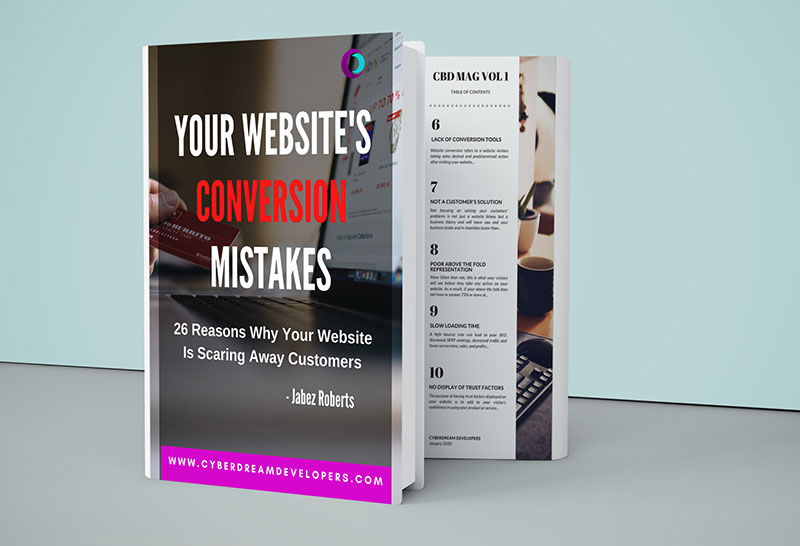Introduction – Set Better SMART Goals With These 7 Strategies
Have you ever started a new project and not finished it?
Have you ever set a goal for your business or marketing strategy but in the end you’re not sure if you were successful or if it was even worth the trouble to do in the first place?
These and others are problems you will face when you don’t use SMART goals in you setting your marketing goals and planning your marketing strategy.
SMART goals will help make sure that doesn’t happen.
SMART goals are Specific, Measurable, Achievable, Relevant & Time-bound.
Setting SMART goals can give your marketing strategy the direction it needs to be successful.
SMART goals allow you to focus on the end goal while also making sure that you don’t get discouraged along the way. SMART goals also help facilitate better decision-making because it is easier for businesses to identify what needs to be done when more specifics are given.
In this blog post, we will discuss what SMART Goals are and how they can improve your marketing strategy!
Download Our Free eBook

What Are SMART Goals?
We’ve already defined what SMART Goals are in the introduction of this post but let us define SMART Goals again in a slightly different way to help you understand what they are.
SMART Goals are a type of goal-setting strategy that helps you set goals that are Specific, Measurable, Achievable/Attainable, Relevant, and Timely.
SMART Goals can help improve your marketing strategy and business because they provide a clear direction for success and enable you to track progress more easily.
SMART goals allow you to break down large tasks into smaller ones so it’s easier to stay on task while also making sure nothing is missed.
SMART goals are much more effective for marketing than vague or poorly defined goals.
Any business of any size can benefit from using it in its marketing campaigns and strategies.
In fact, we recommend using them in all other facets of your business to ensure you have a metric by which to easily and quickly determine the success and efficiency of your activities.
We are going to take a deeper look at these goals below and give an example of them as we go forward.
Specific Goals
Specific means that the goal is clear and well-defined. Without a goal being specific it will be hard to execute because it is unclear what exactly needs to be achieved.
It will also be hard to stop or determine if it was successful because with vagueness around what needs to be done, we can never say for sure that we’ve achieved what needs to be achieved!
From this, we can see that without a goal being specific we might not even be able to execute it.
To set better Specific goals we recommend you use numbers to make it easy to identify.
For example: Instead of saying “I want more website traffic” it is better to say “I want to get to 500,000 monthly visitors this year”
As you can see from this example it is easier to determine if we have been successful or not just by the metric that was given.
As we progress you will also realize that this goal is not only specific about what needs to be achieved but it sets an amount – making it measurable, and it tells by when it needs to be achieved – making it time-bound.

Measurable Goals
Measurable means that there is a way to tell if the goal was achieved. As we look at our previous example of a non-specific goal “I want more website traffic” we realize that it’s hard to quantify or measure “more.”
If we get to 500,000 monthly visitors for the year we might say we got ‘more website visitors’ but in truth that is only possible if we set a metric to define ‘more’ which in this example is 500,000 monthly website visitors.
It is also important to use this to measure success in a simple way.
Let us say that we decided on the goal of getting 500,000 website visitors each month as our measurable metric for success in getting more website visitors.
We can say we were successful only if we started out with less than 500,000 monthly website visitors.
If, in the unfortunate event, we started out with let’s say 600,000 monthly visitors but ended with 500,000 monthly visitors then even though our goal was measurable it wasn’t really helpful in determining what success should look like.
This relates to the next type of SMART Goal we might want to set: Achievable Goals.
Achievable Goals
Achievable means that it’s possible to achieve the goal with hard work and determination.
In business and marketing, we must decide on goals that are achievable and not built on some pipe dream or anomaly in our world.
Rome was not built in a day.
In other words, ensure that the goals you set out to achieve our goals that are highly possible to be achieved with some hard word.
We will give an example of this by building on our goal of getting more website visitors that we have been using so far.
When we decided to implement SMART Goals for this marketing objective our goal changed from “I want more website traffic” to “Get 500,000 monthly website visitors by the end of the year.”
This is a much clearer and smarter goal to try to achieve.
But what if we are currently at 450,000 monthly website visitors? Is our goal still achievable?
What about 100,000 monthly website visitors? Is our goal still achievable?
What if we just started our website and are currently ‘a no man’s land’ website with 0 monthly visits. Is our goal still achievable?
We have to be careful with how we set our goals.
At 450,000 monthly visits, we can say with absolute certainty that getting to 500,000 monthly visitors is achievable or attainable.
With 100,000 monthly website visitors, we might want to take a bit of time to decide, and consulting with a professional on this case will be necessary before we can decide that it’s possible.
Generally, however, it might not be.
Let’s be realistic: we are asking for our website traffic to increase by 500% over the course of a year.
No business grows that fast and we might not want to expect our website visits to grow that fast either.
At 0 monthly visits and a completely new website, we won’t even bother questioning how achievable it is. It’s really not and we all know it.

Relevant Goals
Relevant means that achieving this goal matters to you and your overall marketing and business objective.
We need to ensure that the time, effort, and budget that will be invested in achieving this marketing goal is worth it and that it aligns with all our other marketing and business objectives in the short and/or long term.
Continuing from our example above on getting 500,000 monthly visitors on your website by the end of the year our marketing team at Zeilhan would then take the time to ask you “Why do you need 500,000 monthly website visitors by the end of the year?”
Depending on your answer we might agree or disagree with this marketing objective. The reason is simple: it might not be necessary or relevant to our overall marketing objective.
You might think you need 500,000 monthly website visitors to get to your objective of 200 eCommerce sales per day but we might look at your current traffic levels and decide that you already have enough traffic to get that amount of sales.
We might decide that what you truly need is Conversion Rate Optimization to get more sales from your current website traffic.
Time-Bound Goals
Time-Bound refers to setting a deadline by which we expect our SMART Goal will be accomplished – without one, then how can we know when to stop working?
This one is fairly simple to understand and so we will go straight into our example and explanation.
In the example, we’ve been using we initially decide that “We want more website traffic.”
We then improved that using SMART Goals and it became “Get 500,000 monthly website visitors by the end of the year.”
This gives us a set time by which we must see success in our campaign. It gives us a metric to work with that determines when the goal must be achieved and means that we now have an easy way of deciding if we’re on track to achieve our goals.

What Are The Benefits Of Setting SMART Goals?
Using SMART Goals is not limited to large, established corporations with hundreds of employees.
In fact, we recommend even a startup business owner who is trying to handle his own Digital Marketing use SMART Goals.
By using SMART Goals you can experience many benefits in your business in the short and long term.
Some of the benefits of using SMART Goals include:
- SMART Goal setting forces you to think about what your business needs and ensures that the goal is achievable.
This will ensure you don’t invest much-needed capital into a marketing campaign that isn’t worth it. - SMART Goals will also help you to consider how far off from success you currently are (if at all) so that there’s no guesswork in this regard.
You’ll know if it’s realistic or not! - SMART goals can be used as a way for those within an organization to decide on specific projects they want to take on during any given period with their own time frame assigned; say quarter one starts January first, then company members set SMART goals for themselves which correspond with strategic marketing plans and discussion points but only have until March 31st or the end of quarter one.
- SMART Goals can help you to keep focused on the task at hand. It makes it easier to measure your progress and see how near you are to achieving your goals.
This makes it more likely that you will complete your goals. - SMART Goals make it easier to make big decisions in your business. Because you have a better perspective on your marketing and business goals, it becomes easier to track your progress.
This makes it easier to make the best decision at every turn.

7 Strategies To Set Better SMART Goals
In this section, we are going to discuss 7 strategies to set better SMART Goals in your business.
Strategy 1: Be Time-Specific
Our first strategy is to always be specific about the time you have to complete your goals. You must set a deadline to get every task done.
Elon Musk once said “If you give yourself 6 months to clean your room, you will take 6 months to clean your room. If you give yourself 10 minutes then you will get it done in 10 minutes.” This quote has not been confirmed but the reasoning still stands.
That statement accurately sums up our first strategy for setting SMART Goals.
We also recommend that the time you set to be broken down into sizable chunks that are easy to measure and accomplish.
For example, If your marketing goal is to increase your sales by 20% by the end of the year.
Then break it down into quarterly goals that should be achieved and would contribute to the overall goal of your business.
This might be as simple as aiming to increase sales by 5% each quarter.
Strategy 2: Add A Priority Rating To Your Goals
Adding a priority rating to your goals makes it easier to decide what is important to get done and what to focus on at each turn.
Your priority rating must be dependent on the overall SMART Goal you are trying to achieve and must rate each task to be done in order of:
- How much closer they get you to your goal
- How critical they are to achieving your goals
By setting a priority rating for your goals you will be able to get as close as possible to abiding by the Pareto 80-20 distribution rule.
The Pareto 80-20 rule says, in simple terms, that 80% of your outcome is determined by 20% of the work you do.
That means that by completing the tasks that are part of the 20% most important for your marketing goals you can ensure that you achieve up to 80% of the results.
You can learn more about Pareto Distribution and the 80-20 rule here.

Strategy 3: Ask The Important Questions
When setting any SMART Goal it’s important that you ask the important questions before you move forward with your plans. Asking the following questions will help you to decide if your goals are worth pursuing.
Always start by asking these questions:
- Why: Why should we pursue this goal or set up this marketing campaign?
- How: How does this bring us closer to the main objective?
- What: What will be required to achieve this goal in a financially feasible way?
- When: When should this goal be achieved by?
- Which: Which metrics, factors, and resources are most critical to the success of this campaign?
- Where: Where do we expect to see the most impact from the success of this campaign and is it worth the investment required?
- How much: How much in terms of Pareto’s 80-20 Distribution do we expect to gain from this campaign?
- Who: Who will be required to achieve this goal? Will we have to hire or do we have the required human resource to go ahead with this?
By asking and answering these questions you will be able to steer clear of any trouble that might arise from pursuing a marketing campaign that doesn’t bring us any closer to our main goal.
Strategy 4: Use Numbers To Your Advantage
Using numbers to your advantage means that you must ensure that your SMART Goals always have a number to define terms that are normally vaguely expressed.
For example, It is not enough to want to get more leads from your website.
You must define what ‘more’ is.
This is similar to setting a Measurable Goal where you would want to get 10% more leads each month from your website.
But with this strategy, we will take it a step further to use numbers to our advantage.
In this example, we might want to get 5% more leads from our website because (the answer to WHY we need this marketing campaign) we want to increase our top-line revenue by 20%.
By using numbers to our advantage we would also add a bullet point that mentions that we need to increase revenues by 20%. Then we would add different combinations of how to achieve that goal.
All leads aren’t equal and we know this.
So as an example we might know that one high-ticket lead that is signed might bring us a 30% increase to our top-line revenue.
So we decide that getting one high-ticket client each month gets us there.
If we get two medium-tier clients we will get a 28% increase so we conclude that 2 medium-ticket clients or one high-ticket client get us there.
Then we might decide, based on knowing our business’s accounting numbers for profits, revenues, and losses, that we need to get 5 normal clients each month to get that 20% increase. So we then decide that we need:
- 5 normal clients to get that 20% increase
- 2 normal clients and 1 medium-tier client to get the 20% increase
- 2 medium-tier clients to exceed the 20% increase
- 1 high-ticket client to get a 30% increase
This is the power of using numbers to your advantage.
You can learn more about this strategy by watching this video by Valuetainment and Patrick Bet-David on how to make a $1 million dollar per year income:
Strategy 5: Segment Your Time
Segmenting your time is probably the easiest and most straightforward of all our SMART Goal improving strategies.
The way it works is by first remembering that your SMART goal will take time to achieve and realistically will be more successful with consistent time invested over a certain period.
To use this strategy you will break down your marketing objective into smaller more manageable chunks based on time.
For example, you might want to increase the leads from your website by 20% by the end of the year.
You have decided to use Content Marketing to achieve this goal and have decided that writing helpful blog posts for your target audience (like this one) is the way to go.
You need to get to 50 blog posts on your blog in the next 3 months to start generating 20% more leads from your website by the end of the year.
And so you decide that instead of posting 50 blog posts in one day you will instead break it down into more manageable pieces.
You will aim to post one blog every 2 days on average. Additionally, you also decide to commit 5 extra hours each day solely for creating blog posts.
Because you’ve segmented your time into such manageable and easily attainable goals it’s easier for you to stay on track or pick yourself up if you fall off.
By adding Strategy 1 to the mix you can even aim to have 17 blog posts added to your website each month which works out to about 4 posts each week.
This makes it so much easier to stay on track and ensure that you achieve your marketing goals.

Strategy 6: Learn Set-Back Accounting
As a university student, I studied to be an Actuarial Scientist.
For those of you who don’t know an actuary is someone who specializes in risk management and normally works in insurance and pension funds.
A large part of my study evolved around things going bad and going really bad – mortality.
In fact, this was such a huge part of my study that there were entire advanced courses dedicated to the topic and we were always concerned with finding out when someone is likely to die.
To get to that number we had to do something important by considering every possible factor that could alter the age at which the person could die.
We asked questions like:
- How old is the person?
- Do they have any diseases?
- What is their job?
- Does their family have any hereditary diseases?
- Have they been to the doctor in the last 6 months?
- Why have they or have they not been to the doctor in the last 6 months?
Anything that could affect their mortality rate was taken into consideration.
The same strategy should be used here for your marketing goals. You need to consider everything that could derail your plans.
In my study of computer science and programming (yes, I love learning) we always talk about Murphy’s Law – Anything that can go wrong will go wrong.
Keep this Law in mind. It’s a law, not a rule. That means it holds true and will rare its ugly head even at the most inopportune times.
Consider the economy, your work environment, your resources, your personal health, the health of key personnel.
Anything and anyone that has any role to play in the success of the project must be considered and counter-measures were taken into consideration.
Once you have decided on the things that could influence your success positively and negatively be sure to use the Pareto Distribution and the Priority Rating from Strategy 2 to decide which will impact your chances of success the most.
This will help you to avoid focusing on too many things that could go wrong.
Strategy 7: Stay Consistent!
This is another important strategy that is really simple and sometimes taken for granted.
To make it easy for you to understand we will link to a video below that explains the idea of compound interest:
Now, as you have realized compound interest is a powerful tool that helps you to improve by leaps and bounds in a short time by building on and improving on previous success.
By remaining consistent with applying these SMART Goal strategies to not only your marketing but all your business operations you will begin to see results eventually and when the results come they will explode.
We want you to remember that Rome was not built in a day.
In fact, the hardest part of anything you do is getting started but even a journey of a thousand miles must first begin with one step.
We have listed this as a strategy because strategy doesn’t mean it must be highly complex. It just has to be systematic and highly rewarding.
By being consistent with practicing these strategies you will see opportunities to improve on them and improve your business and yourself.
You will also see ways to use them in conjunction with others in every area of your life.
For example, I only focus on the top 3 tasks of each day that moves me towards success. I break them into time segments and also ensure that I add priority ratings.
The success and failure of each day depend solely on me accomplishing those tasks.
For example, the top priority each day is to ensure that I write at least one blog post. Overachieving would be to post two.
This will ensure that I hit my goal of posting 100 posts to my blog in the next 3.5 months.

How Can I Start Using SMART Goals In My Business Today?
We have broken down SMART Goals and SMART Goal strategies into very easy-to-understand and bite-size pieces in this post.
Our objective is to ensure that you understand SMART Goals and the benefits they bring.
To get started using SMART Goals in your business and then your life we recommend you do one simple thing: Start with the SMART Goal you struggle most with.
If you are disorganized then you should probably ensure that you use strategy 2 to add priorities to your tasks.
If you procrastinate then time-segmenting is the best.
If you overestimate your abilities and try to do too much then take a step back and use strategy 6 to try to see everything that can go wrong.
There are so many ways to use SMART Goals in business and life.
By starting with the one you struggle with the most you will get to a point where you are able to master each SMART Goal and SMART Goal Strategy we thought you here until you can use each of them with fluidity and ease as if it’s natural.
Conclusion – Set Better SMART Goals With These 7 Strategies

In this blog post, we learned about SMART goals and the strategies that you can use to set them.
SMART Goals are helpful in every area of life because they help you organize your thoughts into manageable tasks, give those tasks a timeline so they don’t get pushed back indefinitely, provide actionable steps toward the goal instead of just wishing for it and keep track of what needs to be done.
If you would like to get a marketing strategy built with SMART Goals or have your marketing strategy improved with SMART Goals then set up a free consultation with our team.
We’d love to be able to help you grow your business online and achieve your business goals.
Do you have any questions or ideas about the article? Comment below and let us know what you think and we’d be happy to help you.
Which of these strategies will you use in your business today? Tell us in the comment section below.

